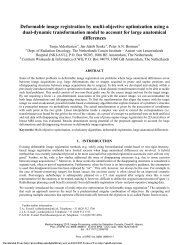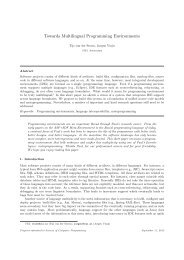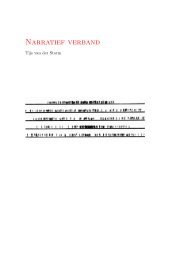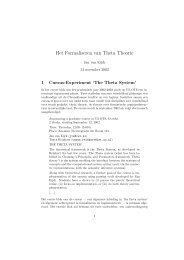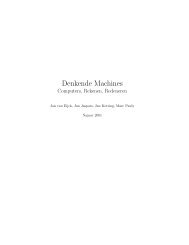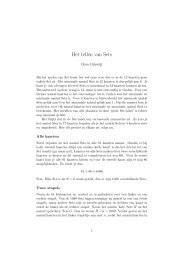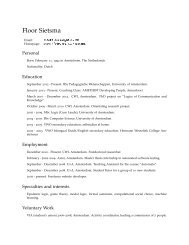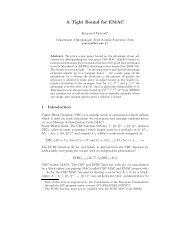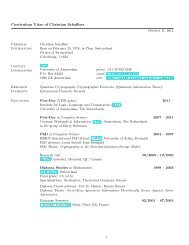Object-Oriented Databases Need for Complex Data Types - CWI
Object-Oriented Databases Need for Complex Data Types - CWI
Object-Oriented Databases Need for Complex Data Types - CWI
You also want an ePaper? Increase the reach of your titles
YUMPU automatically turns print PDFs into web optimized ePapers that Google loves.
<strong>Data</strong>base System Concepts<br />
<strong>Object</strong> Containment<br />
Each component in a design may contain other components<br />
Can be modeled as containment of objects. <strong>Object</strong>s containing;<br />
other objects are called composite objects.<br />
Multiple levels of containment create a containment hierarchy<br />
links interpreted as is-part-of, not is-a.<br />
Allows data to be viewed at different granularities by different<br />
users.<br />
<strong>Data</strong>base System Concepts<br />
8.17<br />
<strong>Object</strong>-<strong>Oriented</strong> <strong>Object</strong> <strong>Oriented</strong> Languages<br />
<strong>Object</strong>-oriented concepts can be used in different ways<br />
<strong>Object</strong>-orientation can be used as a design tool, and be<br />
encoded into, <strong>for</strong> example, a relational database<br />
analogous to modeling data with E-R diagram and then<br />
converting to a set of relations)<br />
The concepts of object orientation can be incorporated into a<br />
programming language that is used to manipulate the<br />
database.<br />
<strong>Object</strong>-relational systems – add complex types and<br />
object-orientation to relational language.<br />
Persistent programming languages – extend objectoriented<br />
programming language to deal with databases<br />
by adding concepts such as persistence and collections.<br />
8.18<br />
©Silberschatz, Korth and Sudarshan<br />
©Silberschatz, Korth and Sudarshan<br />
9



